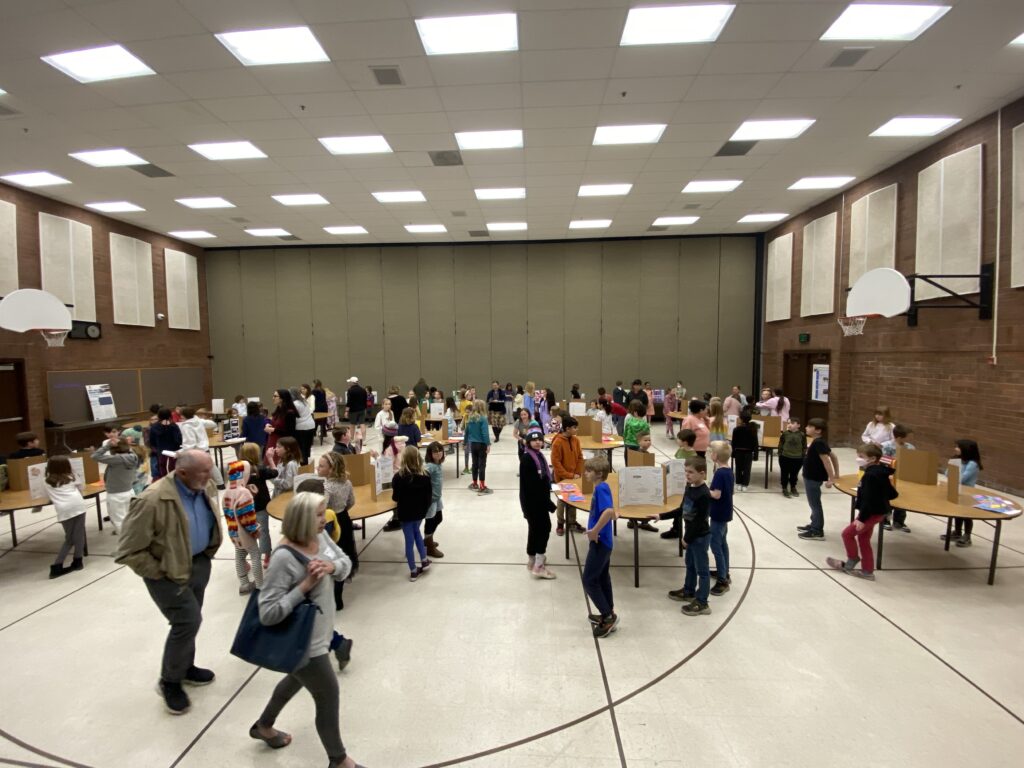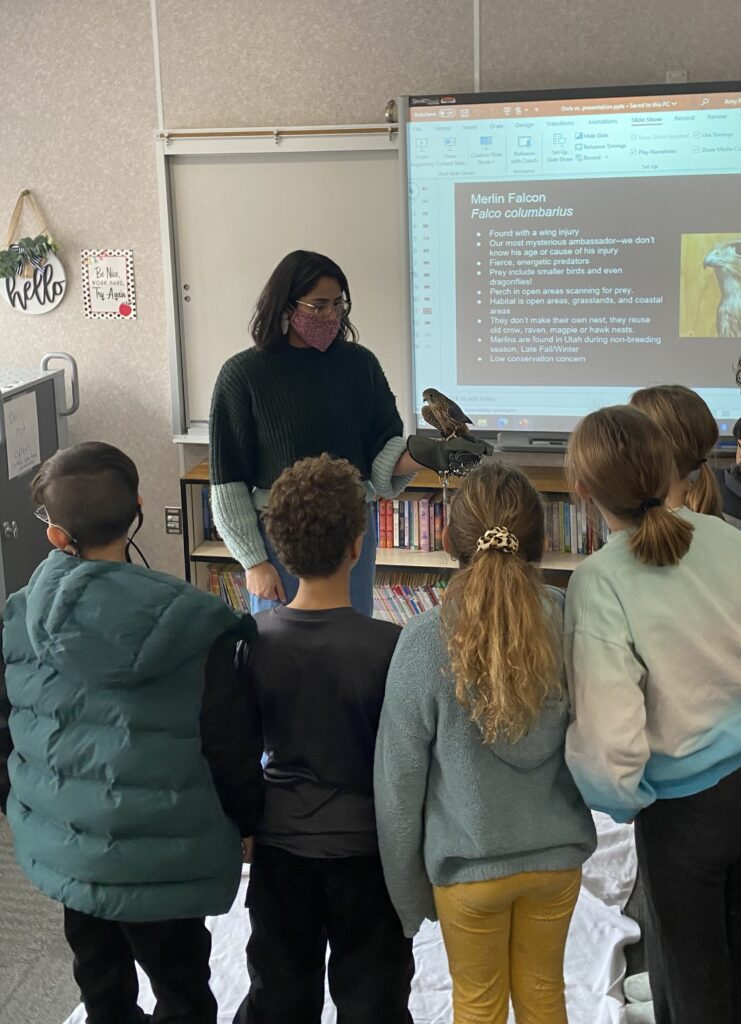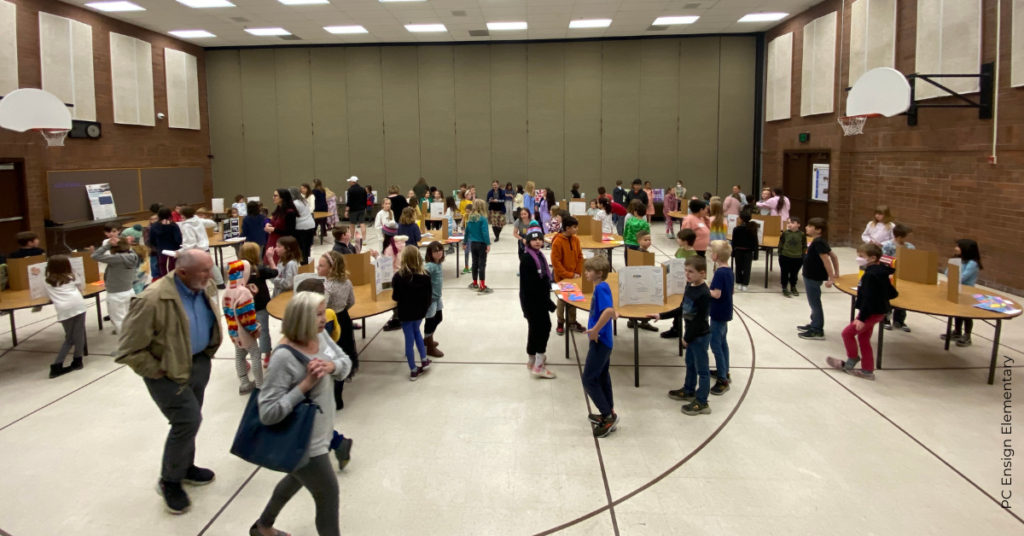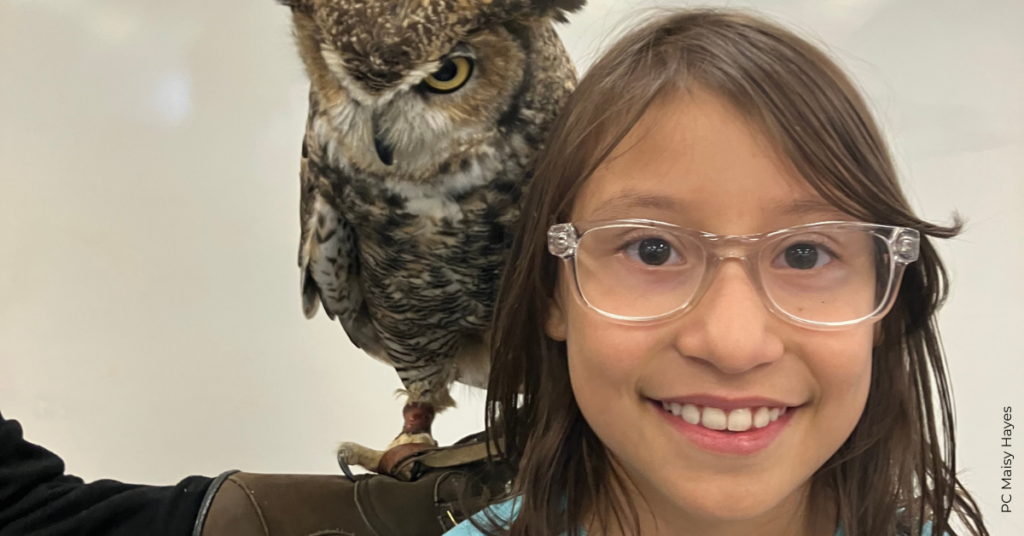
Nature and the outdoors are practically staples of life here in HawkWatch International’s home state of Utah. With what we have learned about how important nature is to the well-being of all humans, it is perhaps unsurprising that we are joined by countless visitors who flock to our National Parks each year. However, not everyone has equal access to our open spaces; some face barriers that prevent them from experiencing all that nature has to offer. The Education Team at HawkWatch International piloted a program this year in Utah, which we hope will help bring exposure to nature to some audiences that currently lack that access.
To help develop and refine this program, we worked with fourth-grade students and teachers at Ensign Elementary School in Salt Lake City, Utah. We arranged a series of four visits to help students learn about Utah birds, community and citizen science, and conservation action projects. The end goal was to have students prepare poster projects for a science fair, where they could share what they had learned with their families and the community.

In true HawkWatch International fashion, we actually have a raptor to thank for this collaboration between our Educators and Ensign Elementary. A pair of owls had been nesting in a cemetery near the school last year, and some of the students and teachers were lucky enough to see and hear them. This helped spark the idea of having them engage in community science with a focus on Utah’s birds.
For our first visit in early December, Educator Renata Vazquez and I brought two of our Raptor Ambassadors to help the students learn about how owls are different from other types of raptors. Our small coworkers (Jack, a male Merlin, and Artemis, a female Western Screech-owl) were huge hits. Students noted the similarities and differences between the two birds, and talked about what makes raptors unique.
For our second visit, we intended to take the students to the cemetery to look for the resident owls, but had to cancel due to inclement weather. This required an adjustment to our original plan, which had depended on students doing a point count of birds at the cemetery. We decided at that point to have students do final projects about particular species of birds that could be found in the area, rather than displaying their (now nonexistent) point count data.
On the third visit to the school, we gave the students examples of how they could structure their display boards to give the community important information about their bird species of choice. We also discussed some basics of public speaking, especially when it comes to community science. Students were given time to work in groups to come up with a mock presentation, which they then shared with us and their classmates.
We returned to Ensign Elementary in April our final visit during the Earth Day science fair. We were accompanied by four of our raptor ambassadors, including our Bald Eagle, Hali. Students’ posters provided information about a variety of local birds, including quite a few posters about Great Horned Owls. One group even had visitors sign a petition to avoid using pesticides that can be harmful to wild birds.
Overall, students seemed enthusiastic about their work and their poster presentations. In the future, we hope to bring this program format to audiences that have fewer opportunities to experience nature, and thereby do our part to work to help close the Nature Gap.
This blog was written by Laura Cleveland, one of HWI’s Educators. You can learn more about Laura here.
Photos by Laura Cleveland


